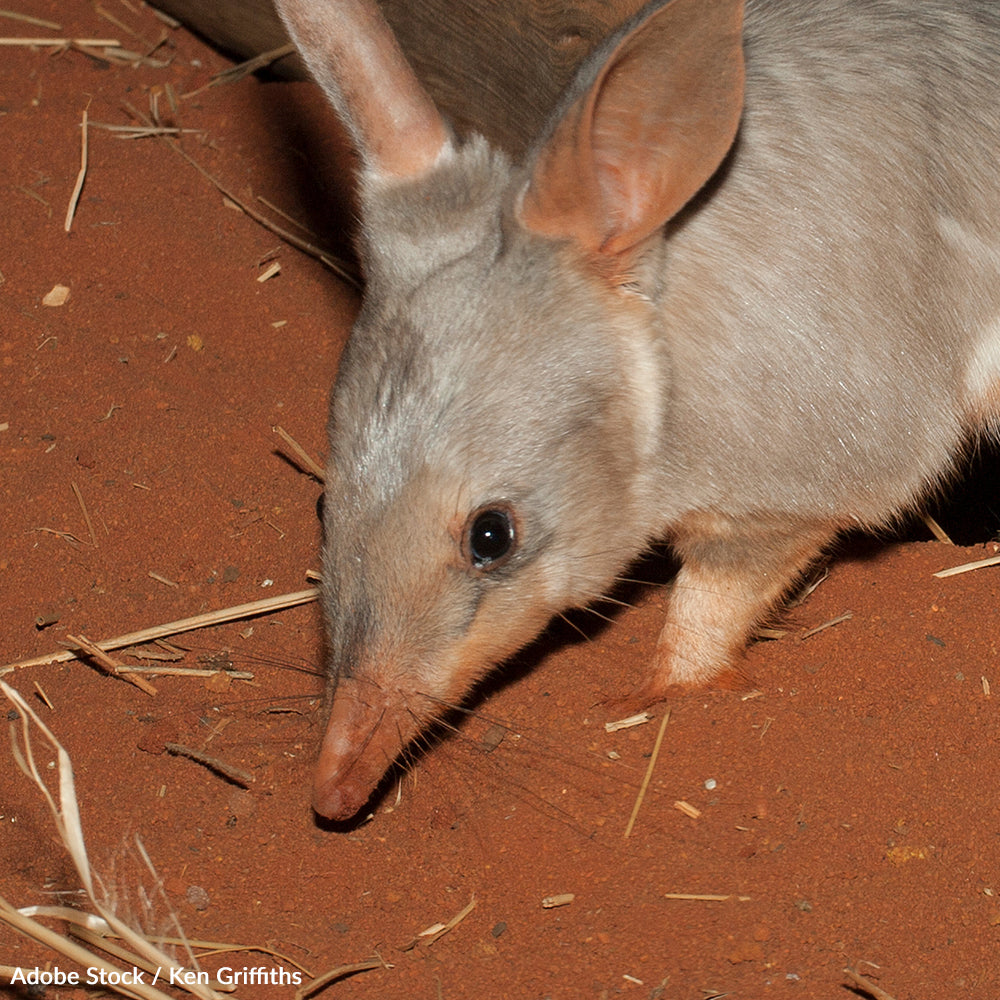Australia: Protect The Bilby Without Poison
Final signature count: 18,379
18,379 signatures toward our 30,000 goal
Sponsor: The Animal Rescue Site
Australia's approach to saving a species shouldn't require turning them into biological weapons. Take a stand for the Bilby!

In the last 200 years, Australia has lost 31 species1. One of the latest to face the threat of extinction is the adorable bilby.
Bilbies are small defenseless animals, easy prey for invasive predators and classified as Vulnerable by the Australian Wildlife Conservancy2.
Climate change has made certain habitats unsuitable for the small marsupials3. Land clearing for farming (or as part of logging operations) is also responsible for wiping out bilbies, but its non-native cats and foxes that could drive the species to extinction4.
The latest strategy to help save the bilby from extinction involves turning them into weapons.
The study in question advocates for inserting poison pellets under the animal’s skin. The poison, a toxic payload of compound 1080, is intended to dissuade predators from attacking the bilby by killing anything that does5.
The traditional method of saving an endangered species would be to enclose the bilby’s area with a fence that would keep out introduced predators. And baits and poison traps have limited effectiveness because cats prefer live prey.
Some Bilbies in western Australia, by ingesting certain plants in southwestern Australia that produce a molecule similar to 1080 poison, have built up an immunity to the deadly properties of these plants. This means they are relatively unaffected by compound 1080, while it is still lethal to most other animals6.
Researchers take this as evidence that the specially-coated 1080 poison will not harm the animals when injected with the pelletized poison.
Predator fences have proven effective in Australia when constructed properly. The best fences block invaders from burrowing in and Bilbies burrowing out, stop foxes and cats from climbing over, and may be electrified to prevent emus and kangaroos from crashing into and damaging the netting7.
The consumption of just 3 milligrams of 1080 poison, a single fox bait, can be lethal for up to five other animals8. Any use of this toxin puts Australia’s native birds and mammals in danger, too. Moreover, the toxic effects of 1080 can continue to persist in carcasses and pose a secondary threat to native animals for up to 75 days after the first death.
We cannot allow this misguided attempt to reduce the threat of introduced species by tampering with an animal’s innate biology and using them as live bait when there are more humane alternatives available. Sign the petition and help us send a message to the Australian government asking them to end this dangerous experiment and take a safer approach to saving the bilbies!


